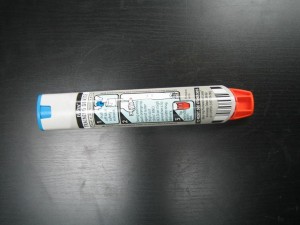Food dye allergy is considered as a common problem that is often linked with the use of artificial dyes in various food products available the market nowadays. Many individuals who suffer from food dye allergy are not even aware that they have an allergy. It is important to pay close attention to the symptoms of food dye allergy so that the appropriate steps can be taken as well as prevent the condition from worsening. By enrolling in a course on first aid, you will learn about food allergies and how to handle them.
What are the initial symptoms?
One of the first symptoms during an allergic reaction to food dye is itching of the mouth. It is usually accompanied by difficulty in taking long breaths and swallowing. It is vital to pay close attention to these initial symptoms since they can are often misinterpreted as another condition or simply a skin irritation.
Digestive symptoms of food dye allergy
The digestive symptoms of food dye allergy typically include abdominal pain, diarrhea, nausea and vomiting. It is important to note that these common digestive symptoms, thus if you suspect that it can indicate an allergic reaction to food dye or the individual already experienced a similar flare up several times, it is best to schedule an appointment with a doctor so that proper testing can be performed in order to determine if the individual is truly allergic to food dye or not.
Skin symptoms
The allergens present in food dyes can cause inflammation of the skin such as eczema and hives once the allergens enter the bloodstream. In serious cases, anaphylaxis can even occur which involves a drastic drop in the blood pressure.
Diagnosing food dye allergy

Individuals who experience the symptoms must consult a doctor to undergo proper testing to determine the exact cause and even rule out other serious ailments. The tests include skin tests, dietary consultation and blood tests. Even though allergic reactions to food dye are not usually deadly, it can cause a lot of pain and discomfort if left untreated. This is the reason why it is vital to follow up after the symptoms manifest. Additionally, the individual must follow the instructions given by the doctor if food dye allergy is detected.
Always bear in mind that food dye allergies are commonly linked with dyes such as red no. 40 and yellow no. 5. Both of these dyes are commonly used in beverages and foods. Do not forget that even lecithin and gums are also responsible for triggering allergies as well as spices, MSG and artificial sweeteners.
What to do during a severe allergic reaction?
In some cases, if a severe allergic reaction to food dyes, it would require immediate care. If the individual is taken to the hospital, the doctor will provide a shot of epinephrine in order to counter the symptoms.
